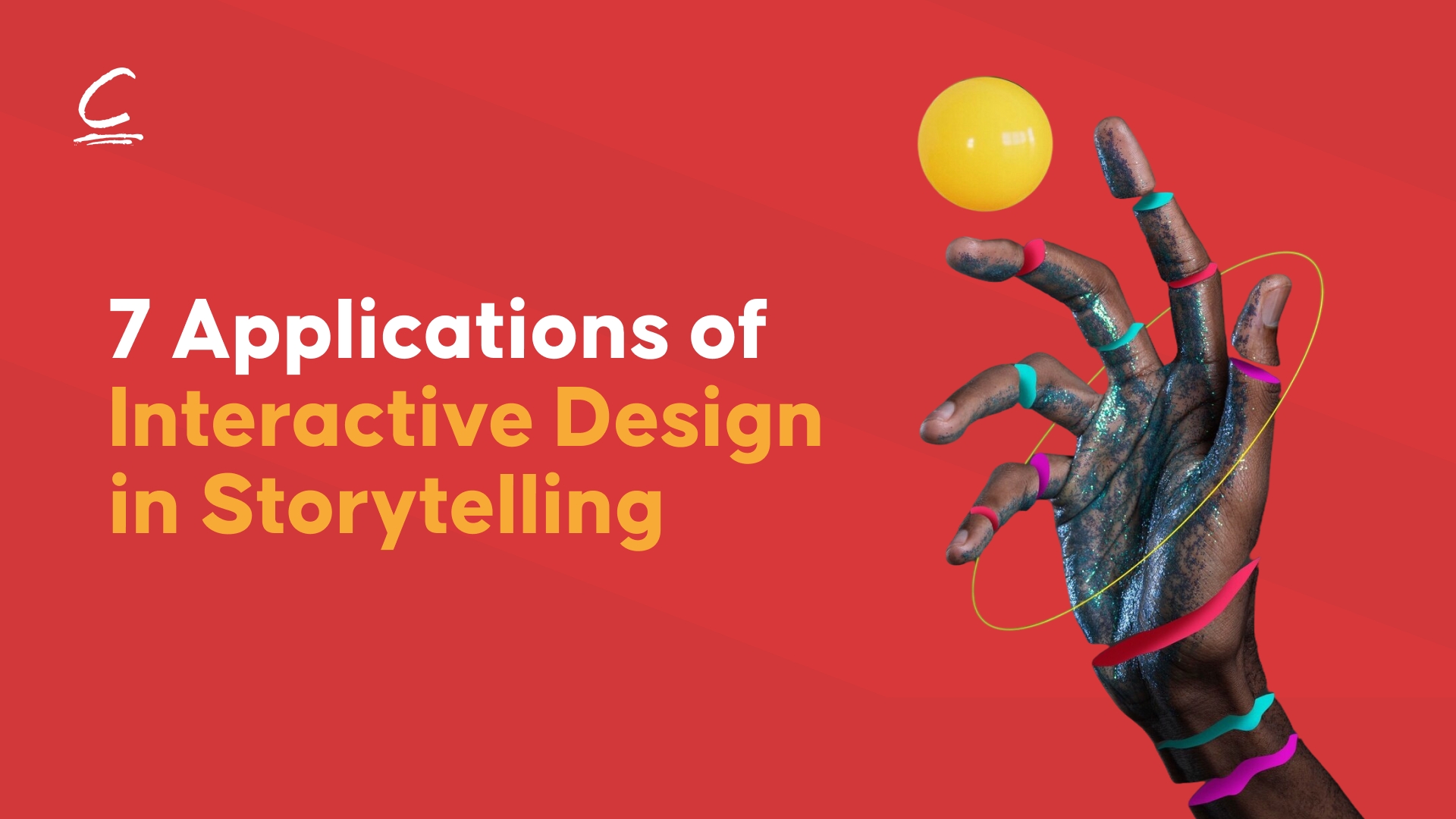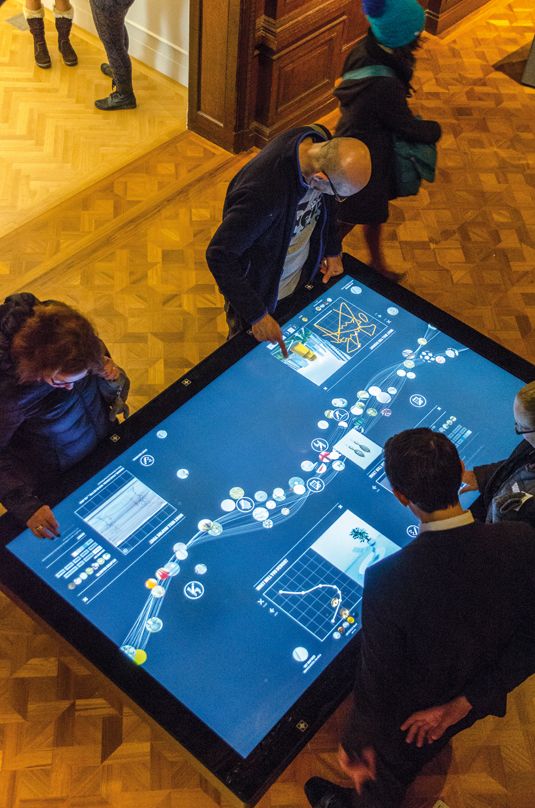
7 Applications Of Interactive Design In Storytelling
Stories spark emotion, and connection cuts through the noise. But storytelling is no longer restricted to written content or videos. We are in the age of digital storytelling, where interactive design can turn your message into an experience.
In essence, storytelling is the art of using digital tools, platforms, and techniques to craft and deliver narratives. It moves beyond traditional text and static images, to embrace multimedia, interactivity, and dynamic experiences to tell a story.
Digital storytelling combines narrative with digital tools like video, motion, websites, and media to help brands tell stories that feel personal and emotionally resonant. From social media marketing to brand campaigns, it’s becoming a must-have for brands looking to build communities and not just followers.
But without great user experience design, even the most compelling story can fall flat. That’s where interactive design comes in.
Read more on: Free AI Tools for Media Production

Understanding Interactive Design, User Experience and Storytelling
Interactive design focuses on how users engage with a digital product, the buttons they click, the paths they follow, and the emotions they feel along the way.
Paired with strong user experience design and a clear brand story, it creates digital spaces that don’t just inform, but involve the audience.
Think of it as a conversation between your brand and your audience, where each scroll, swipe, or click adds to the story.
It’s all about creating experiences where the audience isn’t just a spectator but a participant. It involves designing elements that react to user input, offering choices, and allowing exploration. It transforms a one-way communication into an enjoyable experience.
If interactive design guides user decisions, UX design ensures those choices are intuitive, enjoyable, and seamless. A brilliantly conceived interactive story falls flat if the user gets frustrated trying to navigate it.
Therefore, a focus on user experience design and website design is essential. As interactive narratives unfold within a web browser, they demand thoughtful navigation and provide a delightful experience. The way a user moves through a website isn’t unintentional; it’s meticulously planned to enhance the narrative’s impact.
The Creative Potential: Creative Uses of Interactive Design
The most interesting thing about interactive web design isn’t just its function; it’s its creativity. You could be creating a website, launching a new product, or running a purpose-driven campaign, and interactive design allows you to involve your users in your story with visual elements.
This is where creative uses of interactive design are reflected. You’re no longer just telling a story. You’re building one together with your audience.
Interactive design isn’t simply a functional tool; it’s a medium for deeply engaging and emotionally resonant communication. By combining user experience (UX) principles, intuitive interface design, and responsive media elements, it gives creators a platform to build narrative worlds that invite exploration and personal connection in ways traditional media often cannot. Through features such as branching story paths, adaptive layouts, motion graphics, and real-time user feedback, interactive design transforms ordinary consumption into an active and exciting adventure.
- Evoking Deeper Empathy: Through mechanics like branching narratives and decision-based interactions, users can step into a character’s shoes. This makes the experience feel more personal and real by simulating lived experiences rather than simply describing them.
- Revealing Nuance: Complex topics benefit from features like hover reveals, click-to-expand panels, or progressive disclosure, where micro-interactions let users explore details at their own pace. This ensures a smooth learning curve while still delivering rich, multi-dimensional storytelling.
- Building Community: Interactive polls, challenges, and shared creative spaces on social media can turn your audience into active participants who help shape the story. APIs and social plugins enable real-time participation and user-generated content, turning passive audiences into active co-creators.
- Personal Relevance: Simple personalisation tools such as input fields, user behaviour tracking, and adaptive algorithms, stories can adapt to reflect the user’s context or preferences. This personalised logic means no two journeys are identical, making each user feel the narrative was designed just for them.Evoking Deeper Empathy: Through mechanics like branching narratives and decision-based interactions, users can step into a character’s shoes. This makes the experience feel more personal and real by simulating lived experiences rather than simply describing them.
- Revealing Nuance: Complex topics benefit from features like hover reveals, click-to-expand panels, or progressive disclosure, where micro-interactions let users explore details at their own pace. This ensures a smooth learning curve while still delivering rich, multi-dimensional storytelling.
- Building Community: Interactive polls, challenges, and shared creative spaces on social media can turn your audience into active participants who help shape the story. APIs and social plugins enable real-time participation and user-generated content, turning passive audiences into active co-creators.
- Personal Relevance: Simple personalisation tools such as input fields, user behaviour tracking, and adaptive algorithms, stories can adapt to reflect the user’s context or preferences. This personalised logic means no two journeys are identical, making each user feel the narrative was designed just for them.
7 Applications Of Interactive Design In Storytelling

Now, let’s explore some of the most compelling ways interactive design is being used to tell stories today:
- Immersive Storytelling Websites: This is the most direct application. You can create a storytelling website that goes beyond static pages, using dynamic elements like animated transitions and embedded multimedia (videos, mini-games) to reveal narrative layers as the user explores. Imagine a historical journey where clicking on artefacts unlocks their forgotten tales.
- Interactive Timelines: Ideal for brands wanting to show growth, milestones or evolution. Timelines become stories your audience can follow, watch and explore. Moving beyond passive viewing, these non-fiction narratives allow users to navigate timelines and experience multiple perspectives at their own pace.
- Gamified Storytelling Experiences: By integrating game mechanics such as puzzles, challenges, unlockable content, and rewards directly into the narrative flow, these applications make learning, exploration, or even brand engagement feel like a fun activity. Think of a brand story presented as a series of mini-challenges.
- Storytelling in Social Media Marketing: Social platforms are overflowing with opportunities for bite-sized, engaging narratives. Storytelling in social media marketing uses interactive elements like polls, quizzes, swipe-up stories, interactive filters, and prompts for user-generated content (UGC) to foster direct engagement and build communities around a brand’s narrative.
- Interactive Educational Content: Learning becomes enjoyable when stories are used to teach, enhanced by interactive elements that aid the learning process. Examples include drag-and-drop exercises, clickable diagrams explaining processes, simulated scenarios where choices have consequences, and immediate feedback, making education active and memorable.
- Dynamic Product Journeys: Product storytelling guides your audience through the why, not just the what your product means or represents. That’s where dynamic product journeys make the biggest impact. With interactive design, product pages can evolve from mere features into immersive experiences that highlight benefits, demonstrate functionality, and connect with user needs, all through clicks, motion, and personalisation.
Think:
– Interactive “build your own” product flows
– Clickable demos or 3D walkthroughs
– Product stories that change based on user interest or scrolling behaviour
This approach is especially powerful for fashion, tech, wellness, or lifestyle brands where the product is not just a tool, it’s an identity choice. When executed properly, product storytelling with interactive design increases time on site, strengthens brand perception, and reduces bounce rate.
- Interactive Data & Infographics: Data is powerful, but only if people understand it. Static charts often seem like gibberish. But interactive design infographics make data digestible and engaging. Instead of overwhelming users with graphs and charts, interactive data design lets users explore at their own pace. You can guide users through a narrative, reveal insights layer by layer, or make comparisons with a click.
Examples include:
– Animated charts that unfold as you scroll
– Toggle switches to compare before/after states
– Real-time calculators or audience polls
– Story-driven dashboards for campaign impact or sustainability metrics
For agencies, NGOs, tech startups, or impact-driven brands, this is a powerful way to turn numbers into narratives and spark action.
Interactive design is no longer just about making things “look good” or “work well.” It’s a powerful storytelling tool, one that transforms digital storytelling from passive content into living brand experiences.
And the best part? You don’t need huge budgets to begin. With the right strategy and creative direction, even small brands can use interactive web design ideas to connect deeply and convert consistently.
Want help building a storytelling website or interactive brand experience?
Let’s co-create something memorable.
Contact us at: hello@childcreativestudio.com today!




Leave a Reply